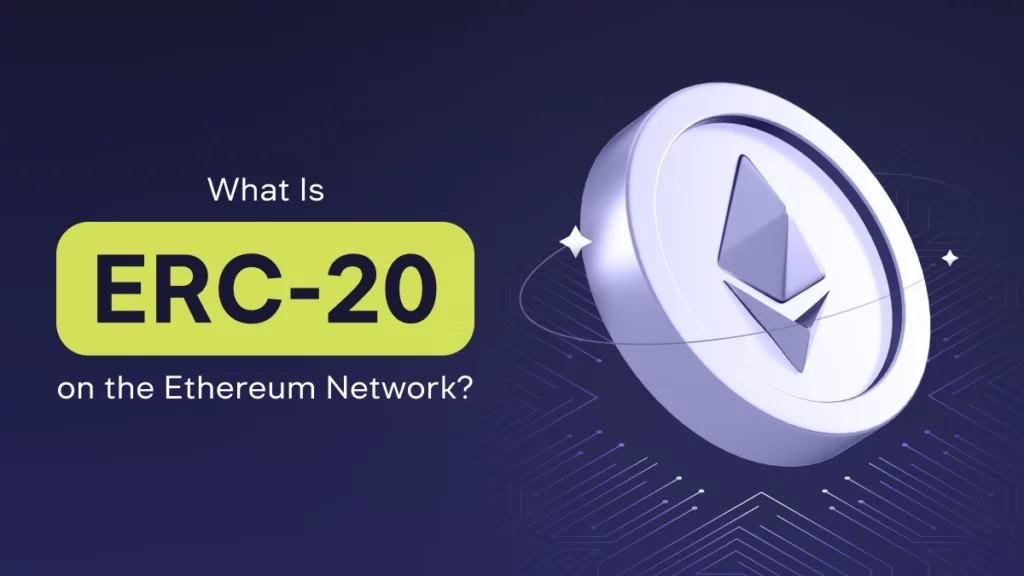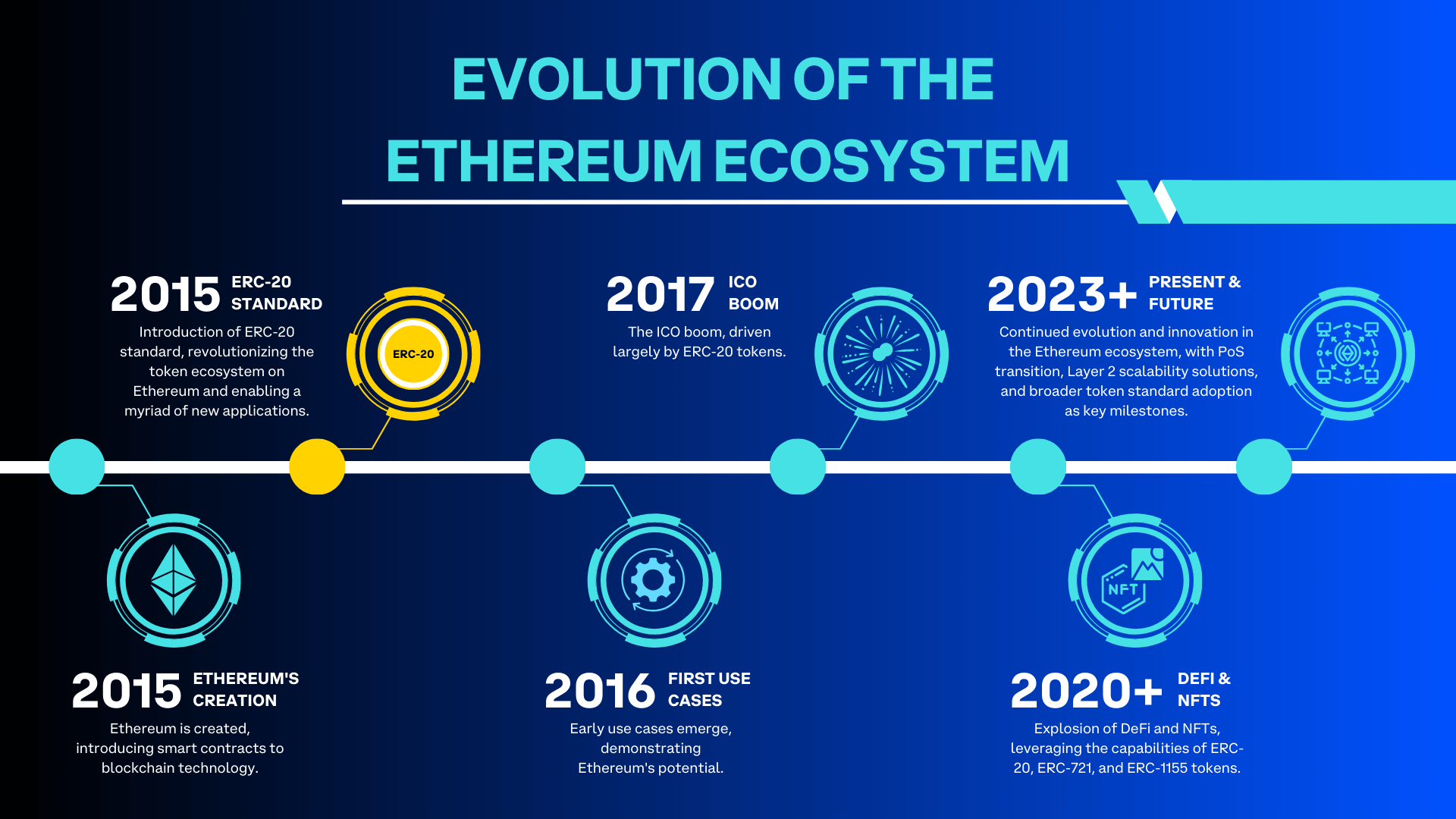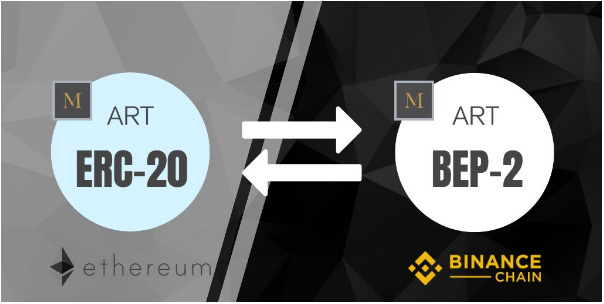1. What is erc-20?

ERC-20 is a technical standard used for creating fungible tokens on the Ethereum blockchain. Fungible tokens are those that can be exchanged with one another, as opposed to non-fungible tokens (NFTs) like ERC-721, which are unique and cannot be exchanged on a one-to-one basis.
ERC-20 tokens can represent a wide range of assets, rights, ownerships, or access to services. They are enabled by smart contracts, allowing these tokens to interact with other products, services, and platforms on the Ethereum network. The primary feature of ERC-20 tokens is their interchangeability, meaning that one token is equivalent to another, making them suitable for use in applications such as decentralized finance (DeFi), gaming, and supply chain management.
2. History of erc-20

The concept of ERC-20 emerged from the growing popularity of Ethereum and its smart contract capabilities. By 2015, the Ethereum network was attracting a large number of developers who wanted to create their own tokens, but there was no standardization in place. Tokens created without standardization were often incompatible with each other, leading to confusion and inefficiency within the ecosystem.
In response to this issue, Ethereum developer Fabian Vogelsteller proposed ERC-20 in 2015. The proposal, which was posted as an Ethereum Request for Comment (ERC) on the Ethereum project's GitHub page, aimed to create a standard for token creation. Since it was the 20th proposal, it was named ERC-20.
The ERC-20 standard was approved and implemented in 2017 as Ethereum Improvement Proposal 20 (EIP-20). This standard set the groundwork for the creation of tokens that would be fully interoperable with other tokens, decentralized applications, and wallets within the Ethereum ecosystem.
3. The standard operation

ERC-20 tokens are governed by a set of predefined rules, known as functions and events, that must be implemented within the token's smart contract. These functions define how the token behaves and how users interact with it. The core functions required for ERC-20 compliance are:
-
TotalSupply: Specifies the total number of tokens that will ever be issued.
-
BalanceOf: Returns the balance of tokens held by a specific address.
-
Transfer: Executes the transfer of a specified number of tokens to a given address.
-
TransferFrom: Executes the transfer of tokens from one address to another on behalf of the owner.
-
Approve: Allows a third-party to withdraw a specified number of tokens from the owner's account.
-
Allowance: Returns the remaining number of tokens that a third-party is allowed to withdraw from the owner's account.
In addition to these core functions, two important events must be included:
-
Transfer: This event is triggered when tokens are successfully transferred from one address to another.
-
Approval: This event logs an approval for a third-party to withdraw tokens from the owner's account.
Optional functions include providing the token's name, symbol, and decimal precision, which are useful for user identification and interoperability.
4. Goals of erc-20

The primary goal of the ERC-20 standard is to provide a uniform set of rules for the creation and management of fungible tokens on the Ethereum network. By following these rules, developers can ensure that their tokens are interoperable with existing decentralized applications and platforms, reducing the likelihood of confusion and incompatibility issues.
ERC-20 simplifies token creation by providing developers with a predictable framework for token behavior. It enables the seamless integration of new tokens into the Ethereum ecosystem, making it easier for users and applications to interact with a wide variety of tokens without needing to adjust their underlying code for each new token type.
5. Erc-20 vs. bep-2

Although ERC-20 is the most widely adopted token standard within the Ethereum ecosystem, other blockchain ecosystems have developed their own token standards. One notable example is Binance's BEP-2 standard, created for tokens on the Binance Chain. BEP-2 shares similarities with ERC-20 in guiding the creation of tokens, but it is specific to the Binance ecosystem.
Binance has also developed the Binance Smart Chain (BSC), which is compatible with both ERC-20 and BEP-2 tokens. BSC allows for the use of ERC-20 tokens while providing enhanced scalability and faster transaction speeds, making it an attractive alternative to Ethereum for certain applications.
6. Use cases and varieties of erc-20 tokens

ERC-20 tokens have a wide range of use cases, from representing financial assets to providing utility within decentralized applications. Some of the most common uses include:
-
Stablecoins: Tokens like Tether (USDT) are ERC-20 tokens that represent fiat currencies like the US dollar. These tokens offer stability and can be used for trading and transferring value across borders.
-
Governance Tokens: Many decentralized finance (DeFi) platforms issue governance tokens that give holders the right to vote on protocol changes and decisions. These tokens empower users to actively participate in the governance of the network.
-
Loyalty Points: Companies can issue ERC-20 tokens as loyalty rewards, allowing customers to earn tokens for purchasing products or services. These tokens can then be redeemed for discounts, rewards, or other benefits.
-
Tokenized Assets: ERC-20 tokens can also be used to represent real-world assets like gold, real estate, or even shares in a company. By tokenizing these assets, they become easier to trade and transfer, offering greater liquidity and access to global markets.
7. Challenges and considerations

While ERC-20 tokens offer numerous benefits, there are some challenges to consider. One of the key concerns is the reliance on centralized entities, such as Tether Limited for USDT, to ensure that tokenized assets are backed by the real-world assets they represent. This centralization introduces risks, including potential loss of trust if the backing assets are not properly managed or audited.
Additionally, as the Ethereum network grows, issues like scalability and high gas fees can impact the efficiency of ERC-20 token transactions. Ethereum developers are working on solutions like Ethereum 2.0 and Layer 2 solutions to address these challenges and improve the scalability and cost-efficiency of the network.
Conclusion
ERC-20 has played a crucial role in the development of the Ethereum ecosystem, providing a standardized framework for creating fungible tokens that are interoperable with other applications and services. Its widespread adoption has paved the way for a variety of token-based projects, from stablecoins to DeFi platforms, and it continues to be a cornerstone of the Ethereum network's growth. However, as the ecosystem evolves, developers and users must remain mindful of the challenges and limitations associated with the ERC-20 standard.
Read more:

 English
English Tiếng Việt
Tiếng Việt.png)
.jpg)

.jpg)
.jpg)
.jpg)

.jpg)
.jpg)

.jpg)
.jpg)
.jpg)




